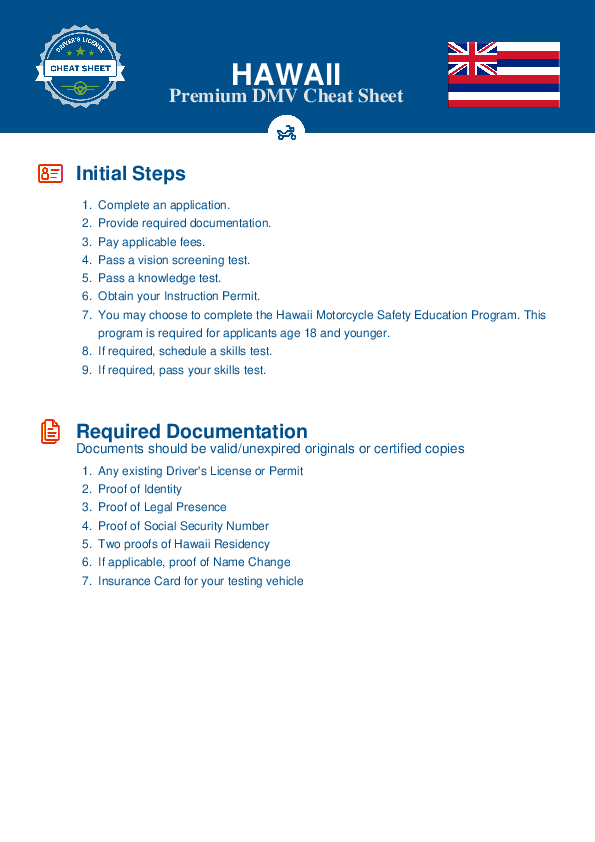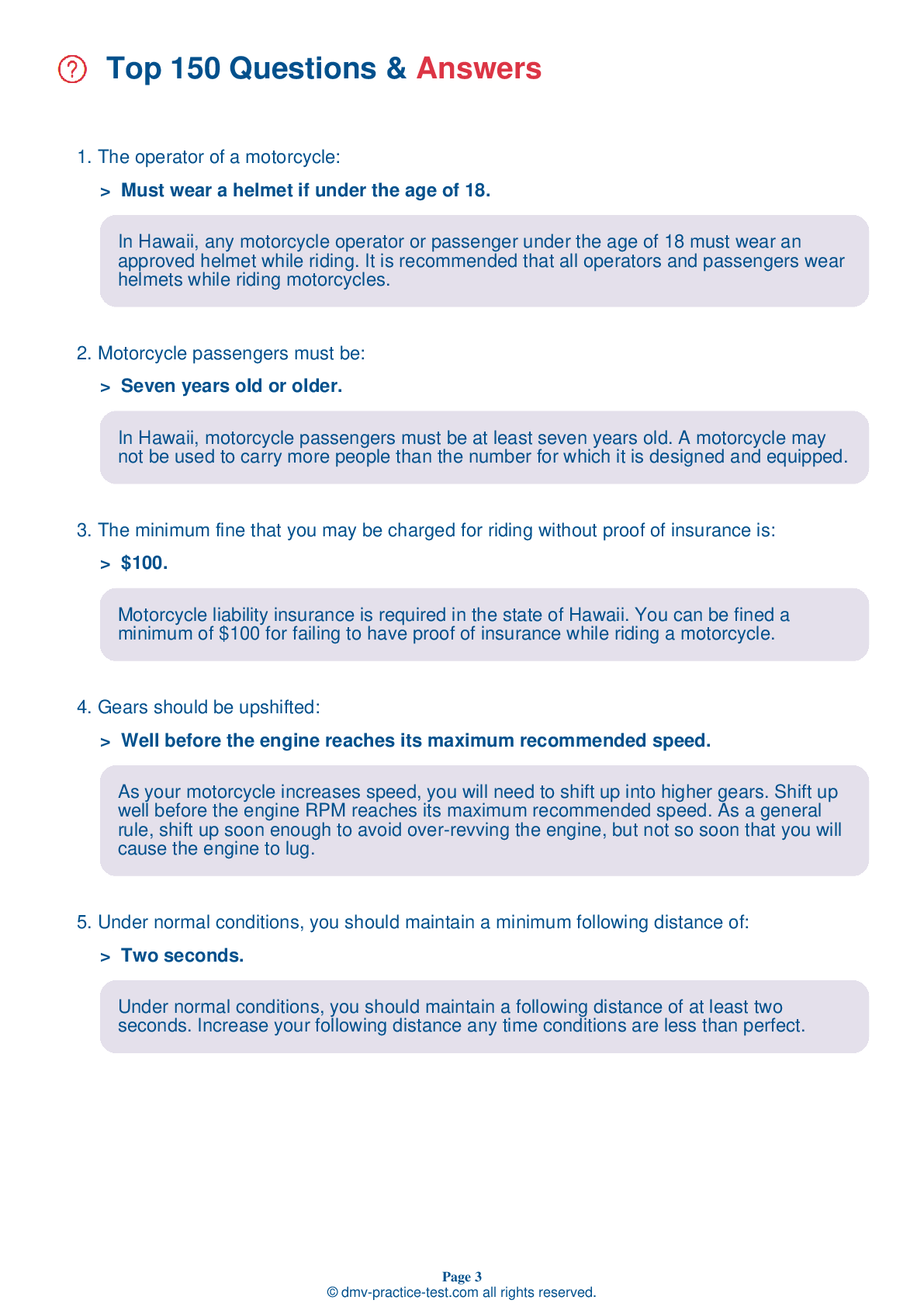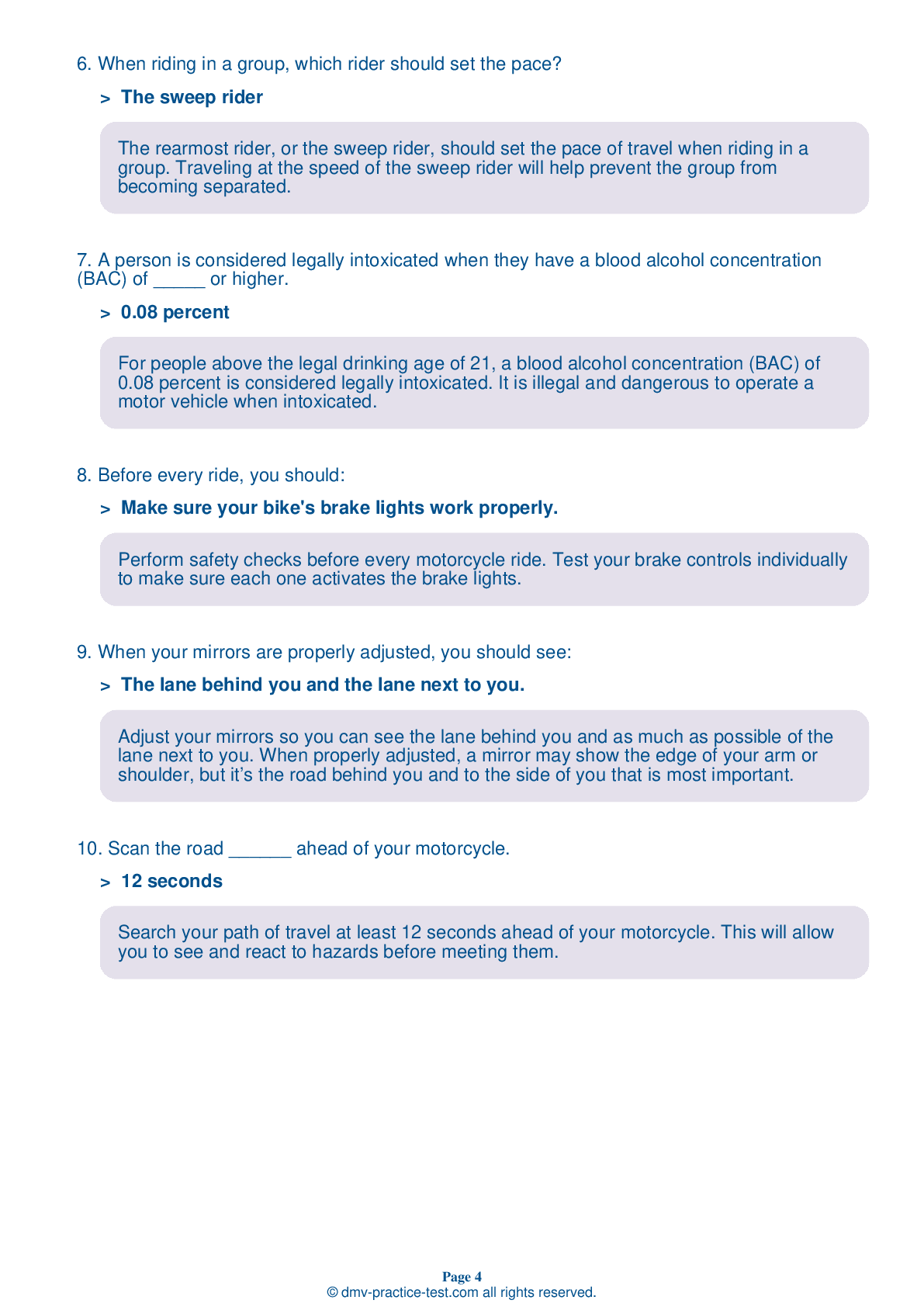Motorcycle Test | License HI 2025 | FREE Online Practice! #16 Page 4 of 4
Take this FREE motorcycle test (license in HI 2025) to check your knowledge of the road rules. To improve your results, download a motorcycle handbook online, study theory, and practice for free on our website. Still worried about how to get a motorcycle license in Hawaii in 2025? Check our website for more sample tests, train as much as possible, and boost your grades!
19 . Mirror checks should be done:
Frequent mirror checks should be part of your normal scanning routine. Additionally, make a special point of using your mirrors before changing lanes, when stopping at an intersection, and before slowing down.
20 . If you are being chased by a dog, you should:
Motorcycles often seem to attract dogs. If you are being chased by a dog, downshift and approach it slowly. Then, as you approach the dog, accelerate and leave it behind.
21 . Riding a motorcycle is ______ driving a car.
Riding a motorcycle is more tiring than driving a car, especially on a long trip. Avoid riding when you are tired. Fatigue can affect your control of the motorcycle.
22 . What could happen if a motorcyclist takes a turn too fast?
Riders often try to take curves or turns too fast. When they can’t hold the turn, they end up crossing into another lane of traffic or going off the road. Riders also often overreact and brake too hard, causing a skid and loss of control.
23 . When turning a three-wheeled motorcycle, you should:
When entering a turn on a three-wheeled motorcycle, you should decrease your speed and slightly lean your upper body in the direction that you intend to turn. Steer your front wheel toward the turn and accelerate gradually as you exit the curve.
24 . Consequences for Driving Under the Influence (DUI) may include:
If convicted of a DUI, you may face fines, license revocation, jail time, court costs, legal defense fees, an insurance rate increase, and community service. If you have been drinking, it is best to stay off your motorcycle.
25 . A plastic, shatter-resistant face shield:
A plastic, shatter-resistant face shield can help protect your whole face if you are involved in a crash. Goggles protect your eyes, but not the rest of your face. A windshield is not an adequate substitute for googles or a face shield.
See the exact questions that will be on the 2025 Hawaii DMV exam.
99.2% of people who use the cheat sheet pass the FIRST TIME
Jeneen was tired of paying $5/gallon. She got herself a scooter that required the motorcycle license. She studyed the motorcycle test cheat sheet and passed her test the next day!
Christopher tells us how he knew nothing prior to obtaining the motorcycle study guide, and he only got one question wrong because he clicked on the wrong answer by mistake.



